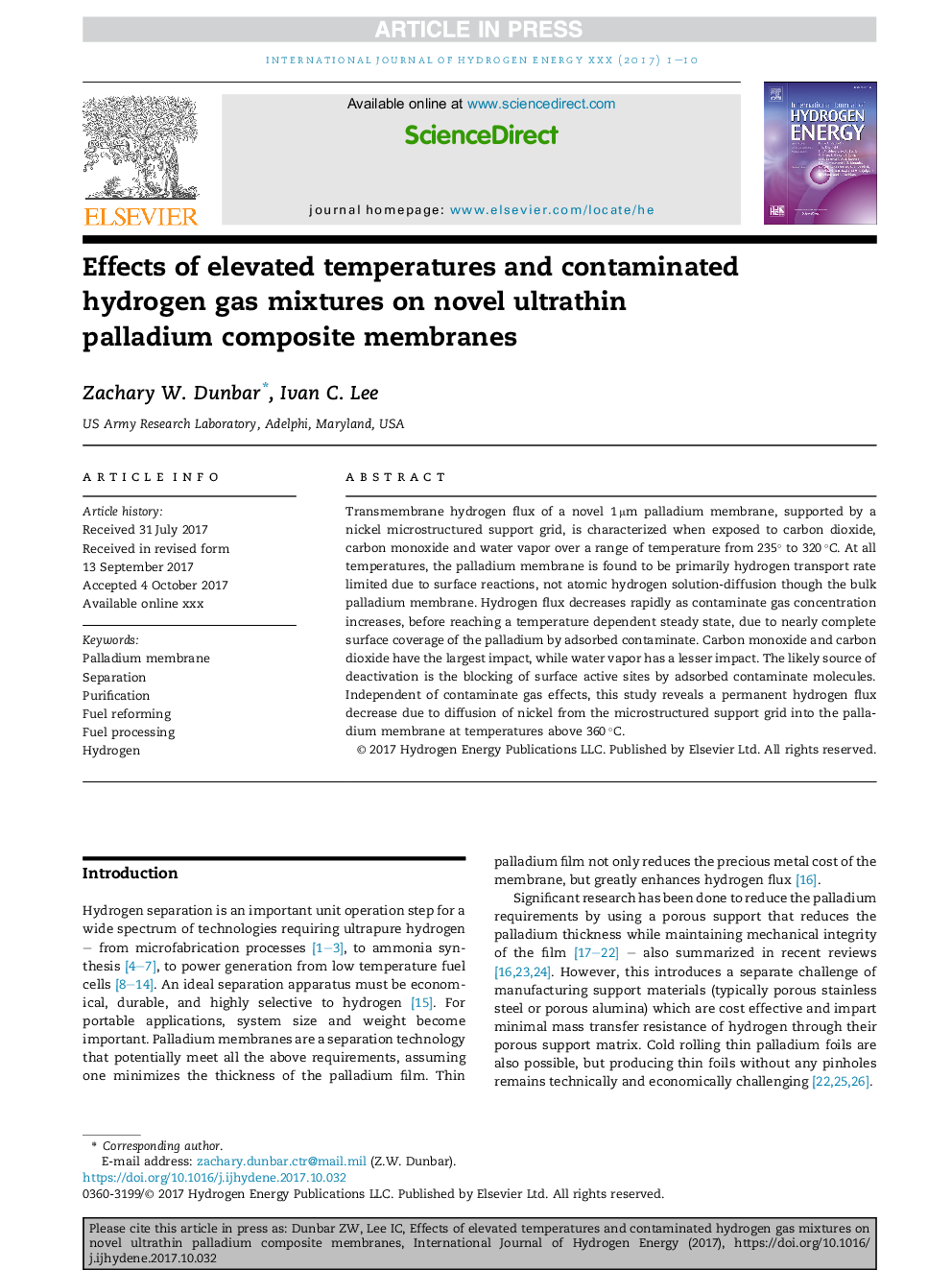| Article ID | Journal | Published Year | Pages | File Type |
|---|---|---|---|---|
| 7709159 | International Journal of Hydrogen Energy | 2017 | 10 Pages |
Abstract
Transmembrane hydrogen flux of a novel 1â¯Î¼m palladium membrane, supported by a nickel microstructured support grid, is characterized when exposed to carbon dioxide, carbon monoxide and water vapor over a range of temperature from 235° to 320â¯Â°C. At all temperatures, the palladium membrane is found to be primarily hydrogen transport rate limited due to surface reactions, not atomic hydrogen solution-diffusion though the bulk palladium membrane. Hydrogen flux decreases rapidly as contaminate gas concentration increases, before reaching a temperature dependent steady state, due to nearly complete surface coverage of the palladium by adsorbed contaminate. Carbon monoxide and carbon dioxide have the largest impact, while water vapor has a lesser impact. The likely source of deactivation is the blocking of surface active sites by adsorbed contaminate molecules. Independent of contaminate gas effects, this study reveals a permanent hydrogen flux decrease due to diffusion of nickel from the microstructured support grid into the palladium membrane at temperatures above 360â¯Â°C.
Related Topics
Physical Sciences and Engineering
Chemistry
Electrochemistry
Authors
Zachary W. Dunbar, Ivan C. Lee,
